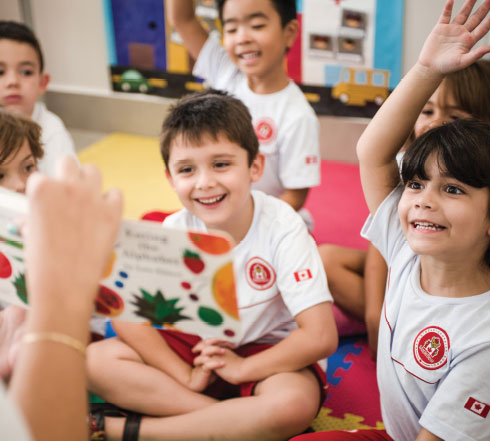
Maple Bear Global Schools gained its start with schools in India and soon introduced its high-quality bilingual education to many countries across the globe. Maple Bear uses Canada’s child-centered and activity-driven education methodology and curriculum that celebrates diversity and play-based learning. By Kelsi Trinidad
Maple Bear Global Schools gained its start with schools in India and soon introduced its high-quality bilingual education to many countries across the globe. Maple Bear uses Canada’s child-centered and activity-driven education methodology and curriculum that celebrates diversity and play-based learning. This method places a strong emphasis on the social and emotional development of children, both of which are crucial for academic success. Maple Bear’s immersive bilingual approach to inclusive learning prepares students for the increasingly globalized world ahead of them.
Currently, Maple Bear has more than 500 schools in 35 countries worldwide. The school’s expansion into the U.S. began with its first school in Tempe, Arizona, in 2014 and now has three corporate locations in the U.S., and three new franchised schools opening in the very near future in Arizona. Maple Bear hopes to expand its franchised U.S. schools to over 200 locations in the next five years starting with the Sun Belt states, primarily Arizona and Texas, and then across the country.
While other international Maple Bear locations instruct early childhood through high school students, the U.S. locations use Maple Bear’s preschool and infant learning programs, which provide the company’s signature bilingual, play-based learning to preschool-aged children, from 6 weeks to 6 years old. Bear Care, the infant learning program, has been adapted to the U.S. maternity leave structure, with its enrollment beginning as early as 6 weeks of age. The Maple Bear Early Childhood Education Program creates a nurturing environment that encourages exploration and discovery during the students’ pivotal learning years. After turning 2, students are introduced to the Spanish language immersion curriculum.
The company has adapted its Canadian curriculum to conform to, and even exceed, local regulations and requirements. Some principles that have led to Maple Bear’s success around the world are its small class sizes and student-to-teacher ratios. Also, students in Maple Bear’s programs develop strong problem-solving and critical-thinking skills because of the 21st century-learning activities they complete.
For new U.S. franchisees, Maple Bear’s trainers travel from Canada to teach and train the teachers locally to implement the methodology and curriculum. This measure also provides quality assurance. From signing on to the franchise to well after launching a learning center, the entire Maple Bear team, including marketing and operations, is on hand to help new schools become and stay successful. One of the advantages of having such a global network of schools is that new franchisees have access to many learning center owners who can share their findings and best practices.
While a strong background in education or business is preferred, the ideal candidate must also, above all, want to make a difference in their community. A candidate should be able to see the impact that a quality education can have on young minds and how that can uplift a community.
Kelsi Trinidad

